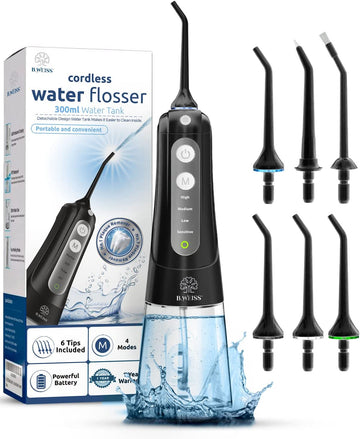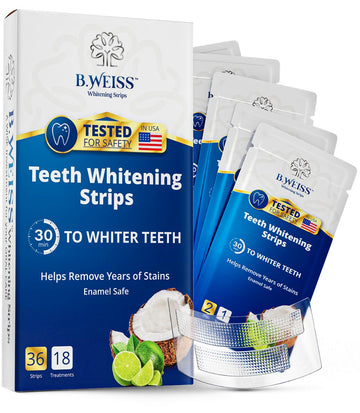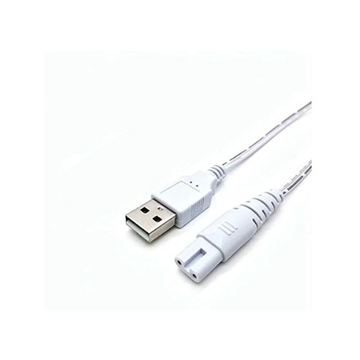6 Oral Problems A Water Flosser Can Fix
Did you know that a lot of people neglect to floss their teeth resulting in different oral health problems? It is no wonder as the use of string floss is tedious and may take some time to administer so people will just let the day pass by mere brushing alone. However, brushing is not enough. If you’re tired of using string floss, use a more effective water flosser device.
Water flossing is one of the most effective ways to keep your oral health in check. Not only does it remove plaque and bacteria from between your teeth, but it also protects your gums, which helps to keep your gums healthy. In this article, we're going to teach you how to use a water flosser for the best oral health possible - so be sure to read on!
What Is A Water Flosser?
A water flosser is a device that uses pressurized water to remove plaque and bacteria from between your teeth. It's a great way to get a deep clean without having to use toothpaste or dental floss.
Water flossers are an easy way to keep your teeth and gums healthy. Water flossers are gentle on your teeth and can remove up to 90% of plaque and bacteria.
The best way to learn about water flossing is to try it out. There are many demonstration videos available online or in the store. If you're new to water flossing, start with a lower pressure setting until you get used to it. Then gradually increase the pressure as needed.
What Are the Oral Problems A Water Flosser Can Fix?
A water flosser can help to solve many oral problems. They are great for removing built-up plaque and bacteria from between your teeth and gums. They also help to remove food particles that may be stuck in between your teeth.
Gum Bleeding
If you're one of the unlucky ones whose gums bleed regularly, a water flosser may be just what you need to fix the problem. B. Weiss water flossers come with a built-in pressure adjuster that can help reduce bleeding by varying the pressure from time to time. Additionally, using a water flosser before brushing your teeth can help remove any plaque and bacteria that may be lurking on your teeth's surface.
Tooth Decay
Tooth decay is a problem that can be prevented by regular flossing. Water flossers remove the plaque and bacteria that cause tooth decay. They are gentle on your teeth and use water instead of string floss which is less likely to cause damage to your gums.
B. Weiss water flosser can help to remove plaque and decay from between teeth, which can stop it from building up and causing damage. If you have tooth decay that has started to form cavities, a water flosser can also help to clean them out.
Sensitive Teeth
If you have sensitive teeth, using a water flosser can be a great way to keep your teeth healthy and clean. A water flosser uses high-velocity water to remove plaque and food from between your teeth. This is a great option for people with sensitive teeth because it does not use harsh chemicals or stimulation.
Moreover, this is much more effective than brushing and can be done in just a few minutes a day. Plus, water flossers are gentle on your gums and teeth.
Yellow Teeth
If you have yellow teeth, you may be wondering what can be done to fix them. If the tooth is not structurally sound, it will start to decay and yellow. If you don't floss, plaque and food can build up on your teeth, leading to yellow teeth. This is especially common in people who smoke or drink alcohol. A water flosser can also help remove plaque and bacteria from between teeth. This will help prevent tooth decay and yellowing. They can help to remove surface stains and get rid of tartar buildup.
Teeth Plaque
Tartar build-up is a problem that occurs when plaque accumulates on your teeth over time. This plaque contains fats, proteins, and other substances, which can cause your teeth to become brown and hard.
If you’re like most people, you brush your teeth twice a day—morning and night. But did you know that plaque can build up on your teeth over time? This sticky film can cause tooth decay, gum disease, and even heart disease.
Fortunately, there are a few things more simple than flossing to keep your teeth clean and healthy! According to the American Dental Association, using a water flosser regularly can remove up to 99% of plaque from between your teeth. So if you’re looking for easy ways to improve your oral health, start flossing!
Bad Breath
If you find yourself struggling to cope with bad breath, there's no need to give up on your day-to-day activities. Many cases of bad breath can be solved with a little water flossing and some oral hygiene tips.
One of the most common causes of bad breath is plaque buildup on your teeth. This can be caused by eating foods that are high in sugar or starch, drinking alcohol, smoking, and using poor dental hygiene techniques (like not brushing your teeth regularly). Plaque can form on your tooth surfaces even if you're not experiencing any other symptoms, so it's important to take action if you think you might have a problem.
There are a few simple ways to prevent plaque from forming and causing bad breath: brush your teeth twice a day, use fluoride toothpaste, and avoid eating foods that are high in sugar or starch. If plaque does form, use a water flosser to remove it from between your teeth. Be sure to hold the water flosser against the gum line for maximum effectiveness; this will help to remove any food particles that may be trapped between your teeth.
Conclusion
If you're like most people, you probably brush your teeth twice a day – once in the morning and once at night. But what about when you can't get to the bathroom in time? That's where B. Weiss water flosser comes in handy.

Not only does it help clean your teeth more effectively, but it also helps remove plaque and bacteria from between your teeth – which can lead to oral problems such as tooth decay or gum disease. If you're looking for an easy way to keep your oral health optimal, consider investing in a water flosser!
Disclaimer:
The content in this article is for informational purposes only and is not a substitute for professional medical advice. Always consult with a healthcare provider before making any changes to your health regimen. The author and publisher do not take responsibility for any consequences resulting from the information provided in this article.





